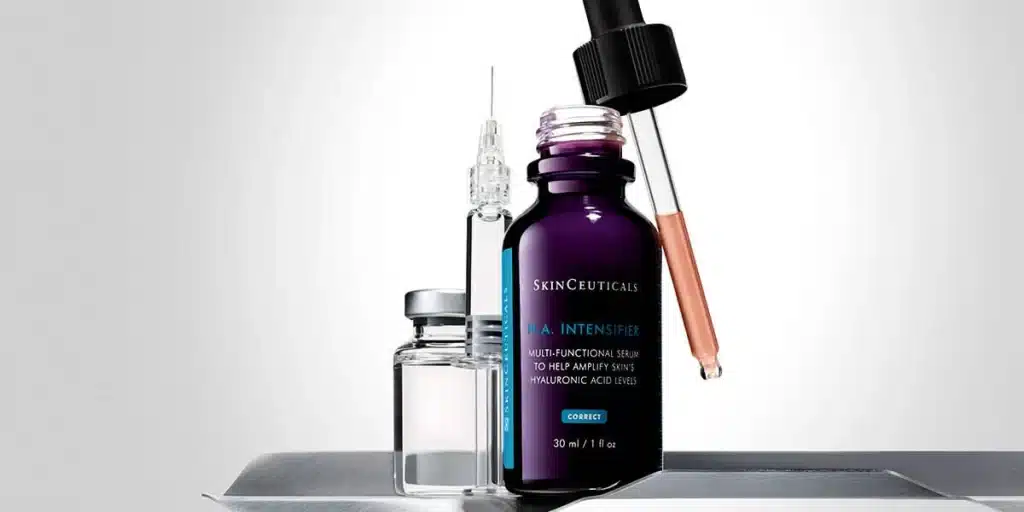Understanding Injectable Fillers: Types, Benefits & Uses
Fillers in non-facial areas: what are the options? Many people think fillers are just for lips and cheeks. However, they can be used in various body parts too. From enhancing the hands to smoothing out wrinkles on the neck, these treatments offer fresh possibilities.
Exploring options like dermal fillers for the buttocks or even the knees can change how we view body aesthetics. These non-invasive procedures provide quick results with minimal downtime. Understanding these options helps you make informed choices about your body goals. Whether you want a subtle lift or volume, there’s a filler that fits your needs perfectly.
Key Takeaways
- Injectable fillers can enhance various non-facial areas, providing options for body contouring and rejuvenation.
- Hyaluronic acid fillers are popular for their versatility and natural-looking results in areas like hands and décolletage.
- Calcium hydroxylapatite is beneficial for deeper tissue support, making it ideal for larger volume areas like the buttocks.
- Poly-L-lactic acid stimulates collagen production, offering long-lasting results that can improve skin texture over time.
- Polymethylmethacrylate provides structural support and is often used in more permanent applications, such as correcting scars.
- Autologous fat injections involve using your own fat, which can lead to a natural look but requires a surgical procedure.
Understanding Injectable Fillers
Purpose of Fillers
Injectable fillers serve a specific purpose in cosmetic procedures. They enhance volume and smooth out wrinkles. These products restore lost fullness in various areas of the body. Many people seek injectable filler treatments to improve their appearance without undergoing surgery.
Fillers work by adding substance under the skin. This process can help create a more youthful look. Common areas for treatment include the hands, chest, and buttocks. Filler injections can also help with contouring and shaping the body.
Versatility of Fillers
Different fillers offer versatility for enhancing non-facial areas. HA fillers are popular because they are made from hyaluronic acid. This substance occurs naturally in the body. It hydrates and plumps the skin effectively.
Synthetic fillers provide another option. Products like Bellafill offer longer-lasting results. These fillers stimulate collagen production over time. Patients may choose these for areas needing more structure and support.
Fillers can be used for various purposes beyond facial aesthetics. For instance, they can treat scars or depressions on the body. They can also enhance curves and add volume to specific regions.
Temporary vs Semi-Permanent Fillers
Filler formulations vary in terms of duration. Some injectables are temporary, lasting several months before fading away. Others are semi-permanent, offering results that can last years.
Temporary fillers allow for adjustments over time. Patients can change their look as desired without long-term commitment. These products typically require repeat injections to maintain effects.
Semi-permanent options offer longer-lasting benefits but come with considerations. Users must commit to a more permanent change in their appearance. The effects may last from one to five years depending on the product used.
Both types have pros and cons based on individual needs. Patients should consult professionals to find the best fit for their goals.
Types of Non-Facial Fillers
Soft Tissue Fillers
t tissue fillers are popular for enhancing various body areas. They can improve volume and smoothness in places like the hands, buttocks, and breasts. These cosmetic fillers help restore a youthful appearance.
These fillers can be made from different materials. Some are natural, while others are synthetic. Hyaluronic acid is a common choice for non-facial applications. It attracts moisture and provides hydration to the skin.
Surgical Filler Treatment
Surgical filler treatment focuses on more significant enhancements. This method often involves larger injections for noticeable results. Many people choose this option for body contouring or breast augmentation.
Surgeons use certain fillers in these procedures. They select fillers based on the area being treated and desired outcomes. The right surgical filler can provide long-lasting effects.
Dermal Fillers
Dermal fillers serve multiple purposes beyond facial applications. They can enhance contours and reduce signs of aging in non-facial areas. Common uses include filling in hollows on the hands or improving skin texture on the chest.
These dermal filler injections can vary significantly in their formulation. Some products stimulate collagen production, leading to longer-lasting results. Others focus on immediate volume enhancement.
Quality Fillers
Quality fillers play a crucial role in ensuring safety and effectiveness. Patients should always look for FDA-approved products. Approval indicates that the filler has been tested for safety and efficacy.
Using quality fillers reduces the risk of complications. Patients may experience fewer side effects when opting for reputable brands. Always consult with a qualified provider to discuss options.
Synthetic Collagen Fillers
Synthetic collagen fillers are another option for non-facial treatments. These fillers mimic natural collagen, providing structure and support to the skin. They can be used in various areas, including the hands and neck.
These fillers offer unique benefits but may require more frequent touch-ups compared to others. Understanding how they work helps patients make informed decisions.
Wrinkle Fillers
Wrinkle fillers are designed to minimize lines and creases on the body. Though mainly associated with facial treatments, they also work well on other areas like the décolletage or hands.
Patients looking to reduce wrinkles should consider these options seriously. They provide immediate results and can boost confidence by improving appearance.
Hyaluronic Acid Options
Consistency
Hyaluronic acid (HA) fillers have a soft, gel-like consistency. This texture allows them to integrate well with the body’s tissues. They provide volume and hydration in various non-facial areas. The effects of HA fillers are temporary. They typically last from six months to two years. This duration depends on the specific product and treatment area.
Pain Management
Most HA fillers include lidocaine. This ingredient helps reduce discomfort during treatment. Patients often report less pain when receiving injections. Lidocaine can make the experience more comfortable. This is especially important for larger treatment areas where multiple injections may be needed.
FDA-Approved Brands
Several brands of HA fillers are FDA-approved. Some of the most recognized names include:
- Juvéderm
- Restylane
- Belotero
- Revance
These brands offer different formulations and concentrations of hyaluronic acid. Each product is designed for specific uses and areas of the body. For example, Juvéderm offers options for both volume and hydration.
Hyaluronic Acid Concentrations
Hyaluronic acid concentrations vary among products. Higher concentrations provide more volume but may also increase the risk of side effects. Lower concentrations are ideal for delicate areas where subtle results are desired. Understanding these differences helps patients choose the right filler for their needs.
Hyaluronidase Injections
etimes, patients may want to reverse the effects of HA fillers. Hyaluronidase injections can dissolve unwanted filler quickly. This enzyme breaks down hyaluronic acid in the body. Several hyaluronidase treatment sessions may be necessary for complete dissolution.
Natural Collagen Stimulation
HA fillers also stimulate natural collagen production in the skin. This process enhances skin elasticity over time. Patients notice improved texture and firmness after treatments. Combining HA fillers with other therapies can yield even better results.
Treatment Areas
Common treatment areas for HA fillers include:
- Hands
- Décolletage
- Knees
- Elbows
These areas benefit from added volume and hydration. Patients should discuss their goals with a qualified provider before treatment.
Knowledge is Key
Understanding the options available is essential for making informed decisions about fillers. Consulting with a professional ensures that patients receive tailored recommendations based on their unique needs and preferences.
Calcium Hydroxylapatite Benefits
Thicker Consistency
Calcium Hydroxylapatite (CaHA) fillers have a thicker consistency compared to other types of dermal fillers. This quality makes them ideal for treating deeper lines and wrinkles. Many patients seek solutions for volume loss in non-facial areas, such as the hands or chest. The thicker texture provides better support and structure.
Using CaHA fillers can enhance the skin’s appearance significantly. They can fill in deep creases and provide a more youthful look. Patients often notice immediate results after treatment.
Collagen Stimulation
CaHA fillers are known for their ability to stimulate collagen production. Collagen is essential for maintaining skin elasticity and firmness. As people age, collagen levels decrease, leading to sagging skin.
With CaHA fillers, the body gradually absorbs the material over time. During this process, it encourages the natural production of collagen. This means that not only do you get immediate results, but you also benefit from long-term improvements in skin texture and tone.
Studies show that patients experience increased collagen formation up to several months after treatment. This unique property sets CaHA apart from other fillers.
FDA-Approved Option
Radiesse® is a well-known, FDA-approved CaHA filler option available on the market. It is specifically designed for non-facial areas but can also be used in facial treatments. Radiesse® provides a versatile solution for those seeking volume restoration.
Patients appreciate its longevity, with effects lasting up to a year or more in some cases. The safety profile of Radiesse® has been established through extensive research and clinical studies.
Healthcare providers often recommend Radiesse® due to its effectiveness and minimal downtime post-treatment. Patients typically return to normal activities shortly after their procedure.
Summary of Benefits
Using calcium hydroxylapatite fillers offers numerous advantages:
- Thicker consistency supports deeper lines.
- Stimulates collagen production for long-lasting results.
- Radiesse® is an FDA-approved option with proven safety.
These benefits make CaHA fillers a preferred choice for many individuals looking to enhance their appearance in non-facial areas.
Poly-L-lactic Acid Uses
Collagen Stimulation
Poly-L-lactic acid (PLA) acts as a collagen stimulator. It works by encouraging the body to produce its own collagen over time. This natural process leads to improved skin texture and volume. As collagen levels rise, the skin appears fuller and more youthful.
The effects of PLA are not immediate. Instead, they develop gradually as collagen builds up. This makes it different from some other fillers that provide instant results. Patients often notice improvements within a few weeks after treatment. Full results can take several months to become visible.
Duration of Effects
One significant advantage of poly-L-lactic acid is its long-lasting effects. Results can last for more than two years in many cases. This extended duration sets it apart from many temporary fillers that require frequent touch-ups. Fewer visits to the clinic mean less time spent on maintenance.
Many patients appreciate this longevity. They prefer treatments that offer lasting results without constant reapplication. The durability of PLA makes it appealing for those looking for a more permanent solution.
FDA-Approved Product
Sculptra® Aesthetic is a well-known product that contains poly-L-lactic acid. It received FDA approval in 2004 for use in cosmetic procedures. This approval confirms its safety and effectiveness for patients.
Sculptra® is designed to treat facial wrinkles and volume loss, but it also finds applications in non-facial areas. Many practitioners use it off-label for areas like the buttocks or thighs. Patients have reported positive outcomes in these regions as well.
Treatment Areas
Poly-L-lactic acid can be used in various body parts beyond the face. Common areas include:
- Buttocks
- Thighs
- Arms
- Abdomen
These treatments help restore volume and improve contouring in these regions. The versatility of PLA allows for creative uses in body aesthetics.
Patient Considerations
Before choosing poly-L-lactic acid, patients should consult with their healthcare provider. Understanding personal goals and expectations is crucial. Providers will assess individual needs and recommend the best treatment plan.
Patients may experience mild side effects like swelling or bruising after the procedure. These effects typically resolve within a few days. Overall, PLA offers a safe option for those seeking longer-lasting results in non-facial areas.
Polymethylmethacrylate Applications
Permanent Support
Polymethylmethacrylate (PMMA) provides permanent support under the skin through its microspheres. These microspheres create a stable framework that helps maintain volume over time. Unlike temporary fillers, PMMA does not get absorbed by the body quickly. This means patients can enjoy longer-lasting results.
The structure of PMMA allows it to integrate well with the surrounding tissues. As a result, it minimizes the risk of migration or lumpiness. The stability offered by PMMA microspheres makes them ideal for non-facial areas like the hands and chest.

Collagen Benefits
Collagen plays a crucial role in the effectiveness of PMMA fillers. These fillers stimulate collagen production in the skin after being injected. Increased collagen leads to improved skin elasticity and firmness. Over time, this natural process enhances the overall appearance.
Patients often notice smoother skin texture and reduced wrinkles as collagen builds up around the microspheres. The combination of PMMA and collagen creates a robust support system beneath the skin’s surface. This synergy is essential for achieving long-term aesthetic goals.
FDA-Approved Fillers
Bellafill® is an FDA-approved PMMA filler specifically designed for cosmetic use. It contains 80% PMMA microspheres and 20% collagen gel. Bellafill® is suitable for treating nasolabial folds and acne scars, among other concerns.
The approval by the FDA indicates that Bellafill® has undergone rigorous testing for safety and efficacy. Many patients choose this option due to its longevity compared to other fillers. Results can last up to five years, making it a popular choice.
Applications Beyond Aesthetics
PMMA fillers have applications beyond cosmetic enhancements. They are also used in reconstructive surgery, particularly for soft tissue augmentation. Surgeons utilize these fillers to restore volume lost due to trauma or congenital conditions.
In dermatology, PMMA aids in smoothing out irregularities from scarring or aging. Its versatility makes it a valuable option for various medical professionals.
Considerations Before Use
While PMMA offers many benefits, some considerations exist before choosing it as a filler option. Patients should consult with qualified practitioners who understand the intricacies of PMMA injections. Discussing medical history and potential allergies is crucial.
Side effects can occur, although they are generally mild. Common reactions include swelling or bruising at the injection site. Serious complications are rare but can happen if not administered correctly.
Autologous Fat Injection Insights
Harvesting Process
Fat injections involve a process called liposuction. This technique removes fat from areas of the body where it is not needed. Common sites include the abdomen, thighs, or flanks.
A cosmetic surgeon uses a small cannula to extract the fat. The surgeon makes tiny incisions in the skin to access the fatty tissue. After harvesting, the fat goes through a purification process. This step ensures that only healthy fat cells are used for grafting.
Injection Technique
The purified fat is then injected into the desired area. This can be done in various non-facial areas like the hands, buttocks, or breasts. The injection technique requires precision. Surgeons must place the fat in specific layers of tissue for optimal results.
Fat grafting is considered safe when performed by trained professionals. It has become increasingly popular due to its effectiveness and natural appearance.
Long-Lasting Results
One major advantage of fat injections is their long-lasting results. Unlike some fillers that need frequent touch-ups, fat grafting can provide enduring effects. Many patients experience improved volume and contour for several years.
Studies show that about 50-70% of injected fat survives after six months. The longevity of results depends on various factors, including the patient’s health and lifestyle.
Specialized Training
Performing autologous fat injection requires specialized training. Not all cosmetic surgeons have this expertise. Proper training ensures that procedures are done safely and effectively.
Surgeons must understand anatomy and techniques for both liposuction and fat grafting. Complications can arise if these procedures are not performed correctly. Patients should seek out board-certified cosmetic surgeons with experience in fat injections.
Comparison with Other Fillers
Compared to synthetic fillers like Radiesse, fat injections offer unique benefits. Synthetic fillers often need regular maintenance and can cause allergic reactions in some individuals. In contrast, using one’s own fat minimizes these risks.
Moreover, fat injections can enhance multiple areas simultaneously. This versatility makes them an attractive option for many patients looking for cosmetic enhancement.
Choosing the Right Treatment
Assessing Goals
Patients must first assess their personal goals. Understanding what they want from filler treatments is crucial. Some may seek volume restoration, while others desire contour enhancement. Identifying these goals helps in selecting the right option.
Expectations should also be realistic. Patients should know that results vary based on individual factors. Discussing these expectations with a qualified provider can provide clarity. This conversation sets the stage for a successful treatment.
Consultation Importance
Consultation with a board-certified professional is essential. These physicians have the training and experience needed to guide patients effectively. They can evaluate medical history and recommend suitable techniques.
During the consultation, patients should discuss any concerns about safety or recovery. Qualified providers will explain the procedures in detail. They will also outline potential risks associated with each treatment.
Factors to Consider
Several factors influence the choice of filler treatments. Longevity of results is one key consideration. Some fillers last longer than others, impacting how often patients need follow-up procedures.
Safety is another critical factor. Research shows that certain products have proven track records in non-facial areas. Patients should prioritize treatments backed by scientific evidence and regulatory approval.
Desired outcomes also play a significant role. Different fillers offer various benefits, such as hydration or structural support. Patients should communicate their desired look clearly during consultations.
Techniques Overview
Various techniques exist for administering fillers in non-facial areas. One common option is injecting hyaluronic acid, which adds volume and hydration. Another technique involves using poly-L-lactic acid, promoting collagen production over time.
Surgical procedures are available for more permanent solutions. However, these options often involve longer recovery times and higher risks. Patients should weigh these factors against their goals and preferences.
Recovery Insights
Recovery experiences vary depending on the treatment chosen. Non-surgical procedures typically require minimal downtime. Patients may return to daily activities shortly after receiving treatment.
In contrast, surgical options may involve extended recovery periods. Patients should prepare for possible swelling or bruising following any procedure. Understanding this aspect helps set realistic expectations.
Final Remarks
Understanding fillers in non-facial areas expands your options for enhancing your appearance. From hyaluronic acid to autologous fat injections, each type offers unique benefits tailored to your needs. Choosing the right treatment can boost your confidence and improve your overall look.
Take the time to consult with a qualified professional who can guide you through these choices. Your journey to a refreshed appearance starts with informed decisions. Dive deeper into the world of non-facial fillers and discover what suits you best. Don’t hesitate—explore your options today!
Frequently Asked Questions
What are injectable fillers used for in non-facial areas?
Injectable fillers enhance volume, smooth out wrinkles, and improve skin texture in various body parts, such as hands, décolletage, and buttocks. They provide a youthful appearance and boost self-confidence.
How long do non-facial fillers last?
The longevity of non-facial fillers varies by type. Hyaluronic acid fillers typically last 6-12 months, while calcium hydroxylapatite can last up to 18 months. Always consult with a professional for personalized advice.
Are there any side effects of using fillers in non-facial areas?
Common side effects include swelling, bruising, and redness at the injection site. Serious complications are rare but may occur. It’s essential to choose a qualified practitioner to minimize risks.
Can I combine different types of fillers?
Yes, combining different types of fillers is common to achieve desired results. Each filler has unique properties that target specific concerns. Consult with an expert to determine the best combination for your needs.
Is the treatment process painful?
Most patients report minimal discomfort during filler injections. Topical anesthetics can be applied beforehand to enhance comfort. Discuss pain management options with your provider for a more pleasant experience.
How do I choose the right filler for my needs?
Selecting the right filler depends on your treatment goals, desired results, and specific area of concern. A consultation with a skilled injector will help tailor the best approach for you.
Are non-facial fillers safe?
When administered by a certified professional, non-facial fillers are generally safe. Research the provider’s credentials and experience to ensure an optimal and secure treatment process.






